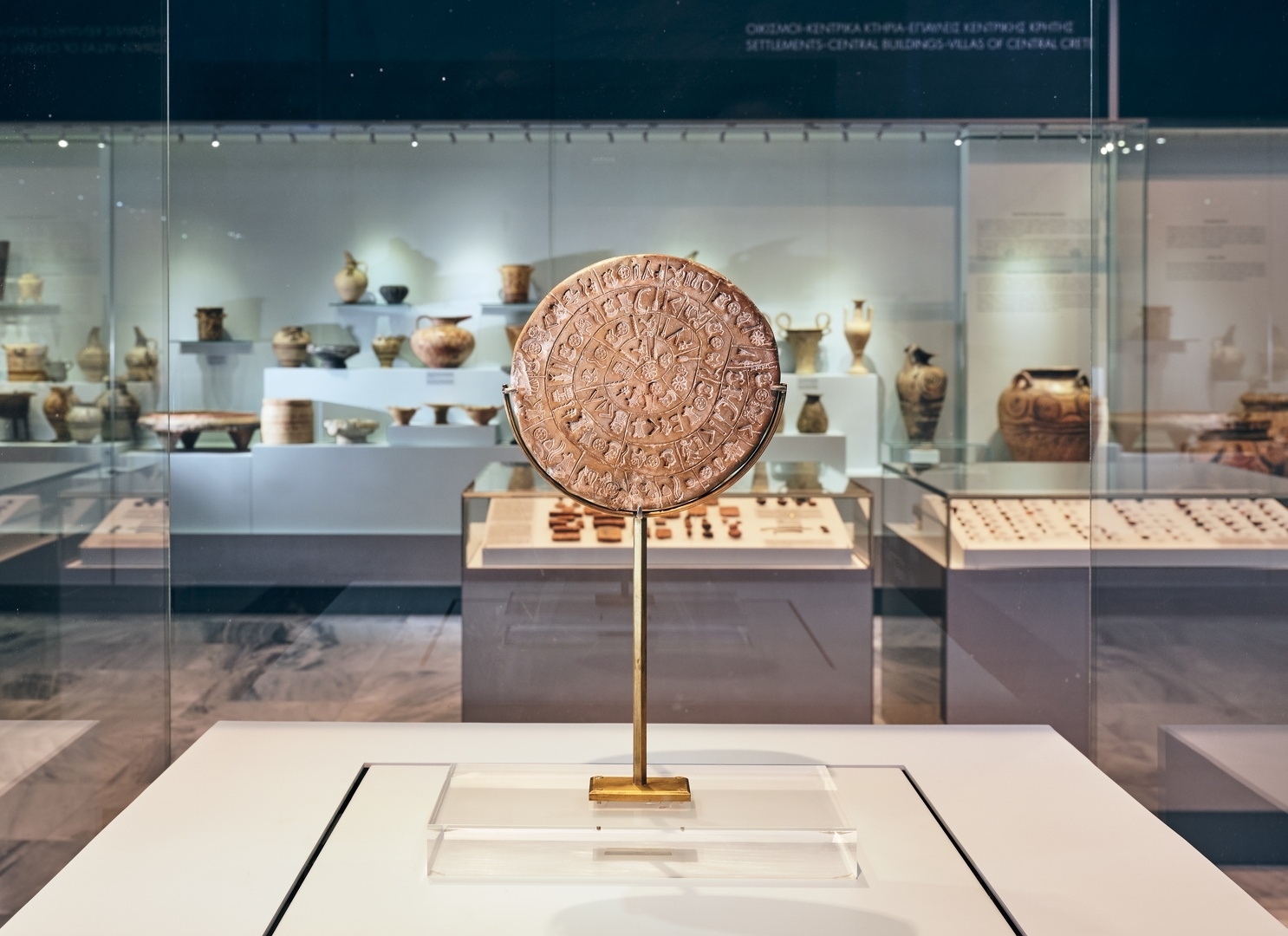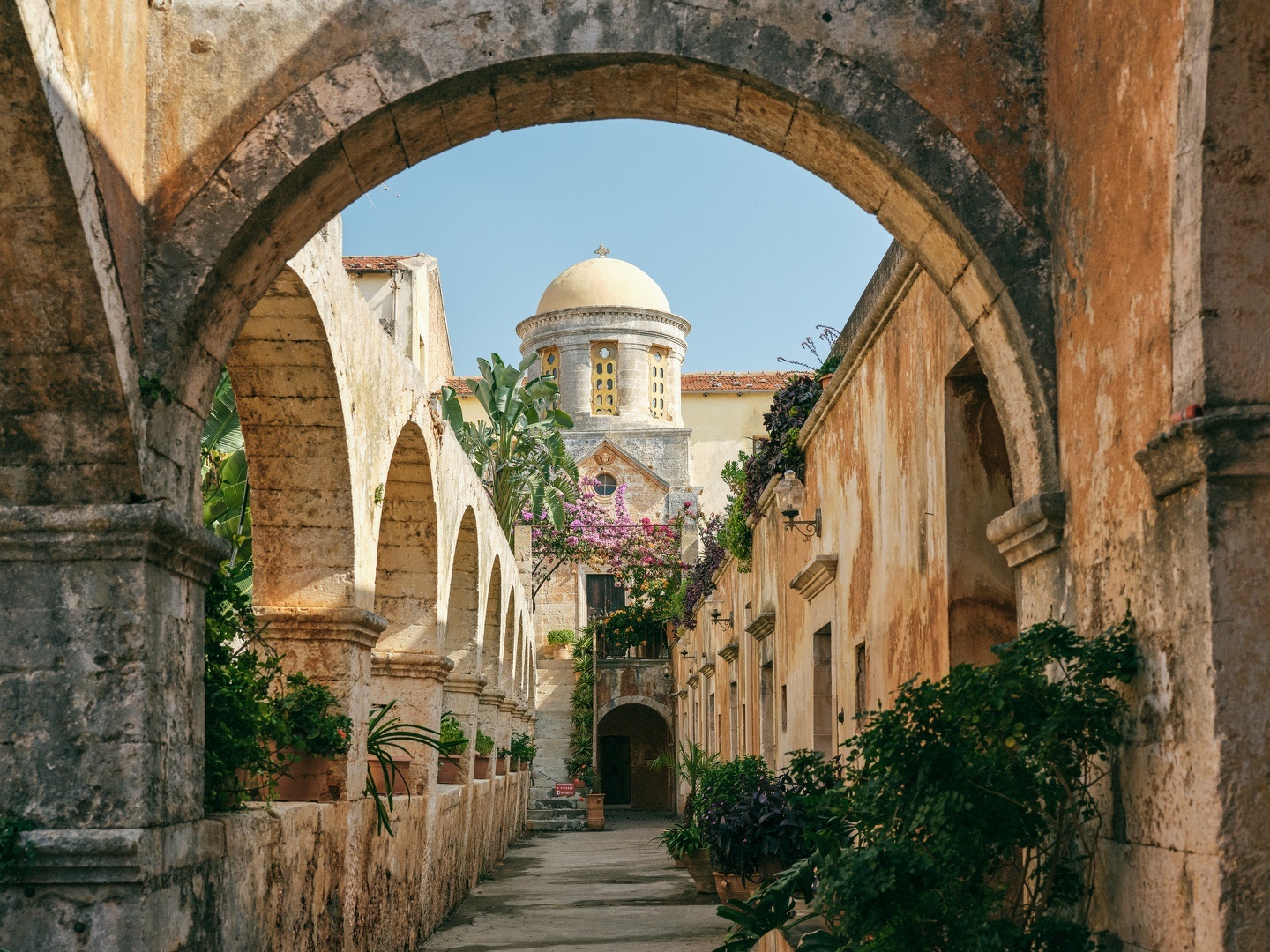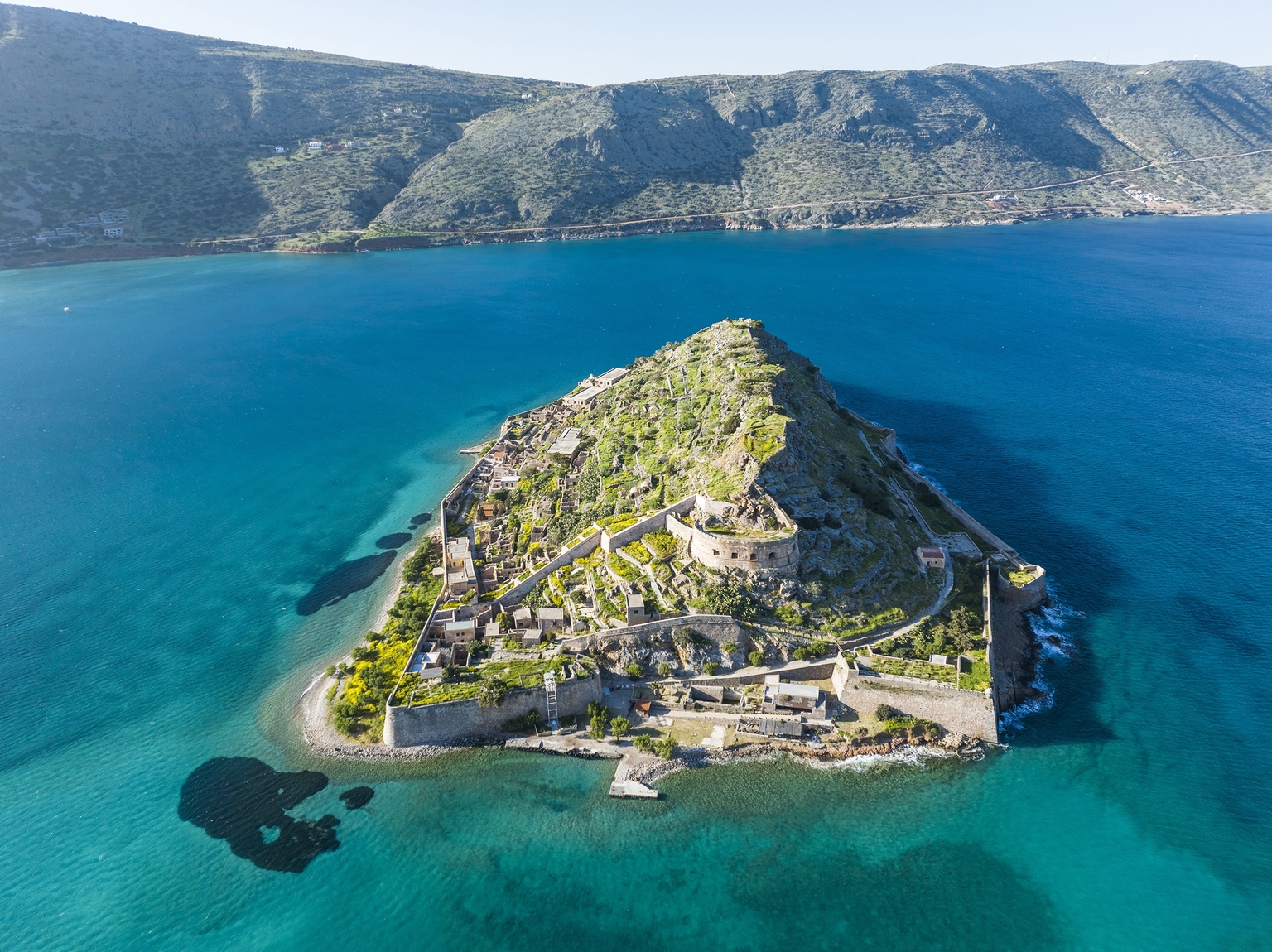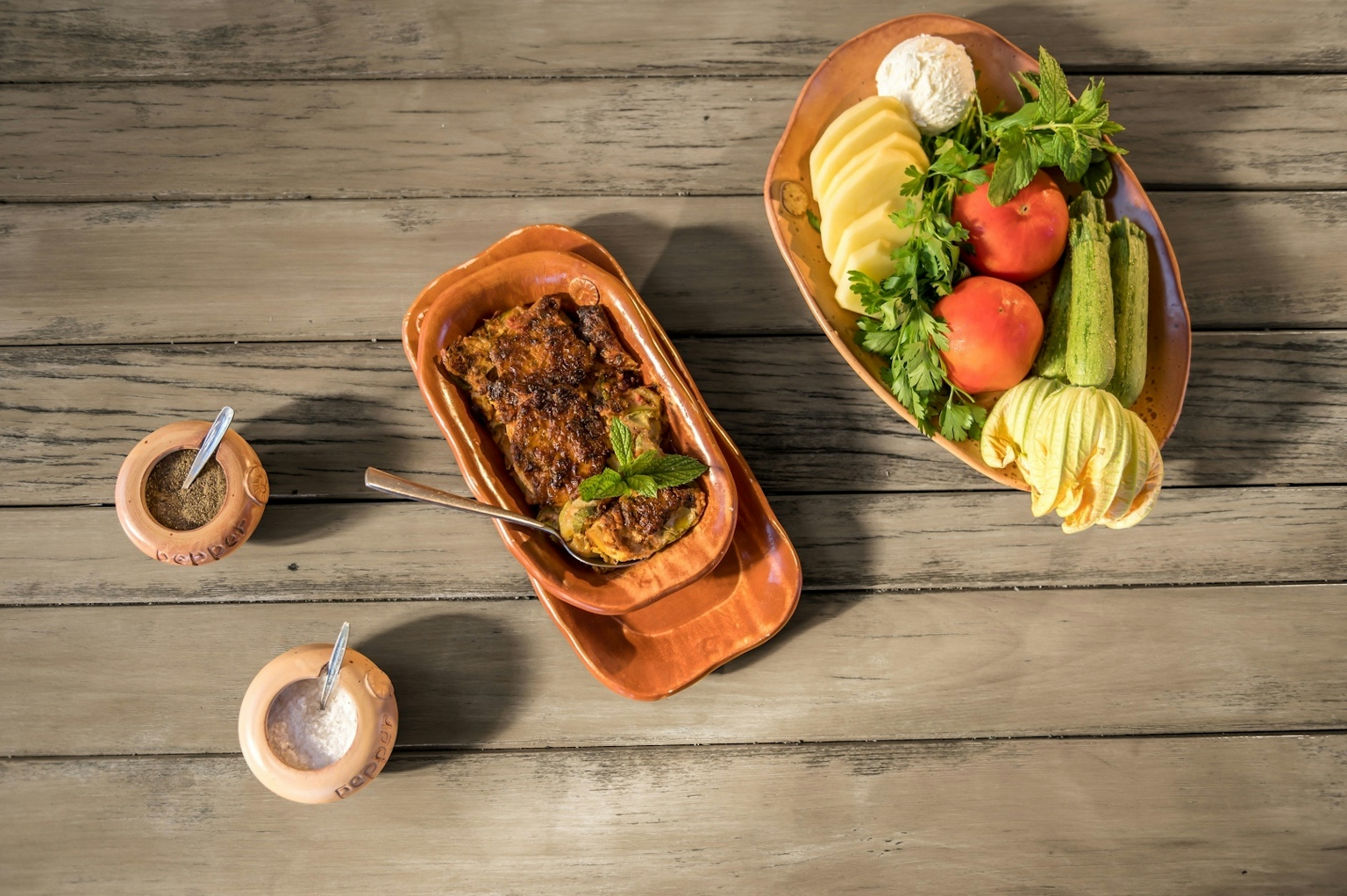Phyllo: “Son, may the flour that passes through your hands turn to gold”
Author Discover Crete
Gastronomy
Gastronomy
The thin phyllo pastry used for pies takes many different shapes in the experienced hands of Kyr-Giorgos, the only artisan in Crete who still makes it in the traditional manner. The entrance to his workspace in the old town of Rethymno is through a surprisingly impressive door. It has a lintel made of intricately carved marble bearing the coat of arms of a Venetian family that lived here centuries ago; the motto on it reads: “Virtue makes a house sparkle.”
Inside, Kyr-Giorgos’ tireless hands defend that sparkle with unceasing vigor. Deftly they spread a white circle of dough across the enormous 4-meter-wide table, then toss it into the air as though it were a bedsheet and let it float down to form a giant dome as it settles. His fingers pluck its sides and stretch it out until it becomes as thin and transparent as rice paper.
It is an impressive spectacle that stops passersby in their tracks – a spellbound audience watching an artist’s elegant movements. He smiles back at them – reaching out to people who are interested in what he does, in the craft that he has followed since the age of 12, is important to Kyr-Giorgos.
The movement of a big rotating tray is almost hypnotic as it turns round and round even as the fine threads of angel’s hair pastry are laid out for the kataifi he will make. This rotating tray was regarded as almost cutting-edge equipment back in 1958, when Kyr-Giorgos bought it for his shop. Another memento from that era is an icon of the prophet Elijah that sits proudly in a nook in the Venetian wall. It was a gift given to him on the first morning he opened his doors for business, which happened to coincide with the prophet's feast day. Apart from the icon, he also treasures a blessing bestowed on him by his father when he was a young boy: “Son, may the flour that passes through your hands turn to gold” – a blessing that echoes the sentiments of the Venetian family motto over the door.
Source: “Handcrafted Crete”, Isabella Zambetaki, Region of Crete
































